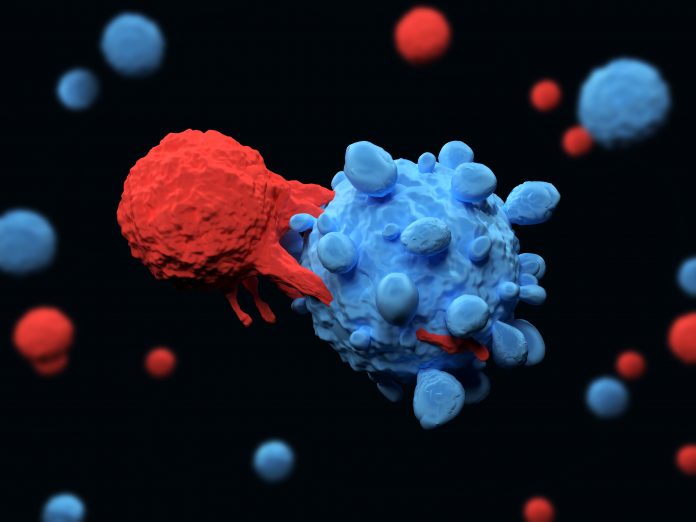
Stanford researchers have developed a new synthetic molecule, called PIP-CpG, that combines a tumor-targeting agent with a molecule that triggers immune activation. This treatment, can be administered intravenously and can make its way to multiple tumor sites, where it recruits immune cells against cancer.
Three doses of this new immunotherapy prolonged the survival of six of nine laboratory mice with an aggressive triple negative breast cancer. Of the six, three appeared cured of their cancer over the duration of the months long study. A single dose of this molecule induced complete tumor regression in five of ten mice. The synthetic molecule showed similar results in a mouse model of pancreatic cancer.
“We essentially cured some animals with just a few injections,” said Jennifer Cochran, Ph.D., Chair of the Department of Bioengineering. “It was pretty astonishing. When we looked within the tumors, we saw they went from a highly immunosuppressive microenvironment to one full of activated B and T cells — similar to what happens when the immune-stimulating molecule is injected directly into the tumor. So, we’re achieving intra-tumoral injection results but with an IV delivery.”
A paper describing the study was published today in Cell Chemical Biology. Cochran shares senior authorship with Carolyn Bertozzi, Ph.D., Director of Stanford’s ChEM-H program, and Ronald Levy, M.D., professor in the School of Medicine. The lead authors are graduate student Caitlyn Miller and instructor of medicine Idit Sagiv-Barfi, Ph.D.
The treatment builds upon an earlier study co-authored by Levy and Sagiv-Barfi in which the same immune-activating agent and another were injected directly into the tumor site. That study showed that the combination could eradicate tumors in mice as well as distant metastases. It also blocked the development of tumors in mice genetically engineered to spontaneously develop mammary tumors.
Coupling PIP to probes that can be visualized via near-infrared imaging or positron emission tomography allows researchers to track the location of hard-to-see cancers in the body. Additional work in the Cochran lab, in collaboration with others, has generated conjugates that seek out cancer cells and deliver a payload of chemotherapy poisons to tumors.
“The surprising result of the new research was that the sculpting of the tumor microenvironment by this intravenously administered molecule was identical to that achieved by injecting immune stimulating agents directly into the tumor,” Levy said. “This is a big advantage because it’s no longer necessary to have an easily or safely injectable tumor site.”
Because the tumor-targeting portion of the molecule — PIP — recognizes integrins, which are found at high levels on the surface of many types of cancer cells, the research suggests the possibility of an off-the-shelf treatment for patients with a variety of cancers.
“PIP is a really versatile tumor-targeting agent because it can localize to so many different types of tumors,” Miller said. “Also, the same molecule is biologically active in mice, nonhuman primates and humans.”
“These integrin-targeting molecules act like guided missiles,” Cochran said. “They can deliver toxic drugs or imaging agents. Now we’re using them to deliver a signal that riles up the immune cells to fight the tumor.” That signal, CpG, mimics a pattern of DNA common in bacteria and viruses but rarely found in vertebrates.
The researchers are now studying the treatment in other types of cancer, and in combination with other immunotherapies.












